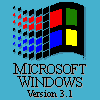Options
Switchport mode's questions
in CCNA & CCENT
1.when i change one side to trunk other side changes to trunk also
on a 3560 switch , is this how it is...
2.changing to nonegotiate mode , why do I have to follow such a long processes ?
Switch(config)#interface GigabitEthernet0/1
Switch(config-if)#switchport nonegotiate
Command rejected: Conflict between 'nonegotiate' and 'dynamic' status.
Switch(config-if)#switchport mode trunk
Command rejected: An interface whose trunk encapsulation is "Auto" can not be configured to "trunk" mode.
Switch(config-if)#switchport mode access
Switch(config-if)#switchport mode trunk
Switch(config-if)#
%LINEPROTO-5-UPDOWN: Line protocol on Interface GigabitEthernet0/1, changed state to down
%LINEPROTO-5-UPDOWN: Line protocol on Interface GigabitEthernet0/1, changed state to up
Switch(config-if)#switchport nonegotiate
Switch(config-if)#
on a 3560 switch , is this how it is...
2.changing to nonegotiate mode , why do I have to follow such a long processes ?
Switch(config)#interface GigabitEthernet0/1
Switch(config-if)#switchport nonegotiate
Command rejected: Conflict between 'nonegotiate' and 'dynamic' status.
Switch(config-if)#switchport mode trunk
Command rejected: An interface whose trunk encapsulation is "Auto" can not be configured to "trunk" mode.
Switch(config-if)#switchport mode access
Switch(config-if)#switchport mode trunk
Switch(config-if)#
%LINEPROTO-5-UPDOWN: Line protocol on Interface GigabitEthernet0/1, changed state to down
%LINEPROTO-5-UPDOWN: Line protocol on Interface GigabitEthernet0/1, changed state to up
Switch(config-if)#switchport nonegotiate
Switch(config-if)#
Comments
-
Options
 james43026
Member Posts: 303 ■■□□□□□□□□
1.) This is most likely because you have the switchport on one of the switches set to dynamic desirable or dynamic auto, and the port on the other switch might be manually configured for a trunk, or something along those lines. The default behavior on a cisco switch is dynamic desirable if it's meant for distro / backbone, and dynamic auto for access layer switches. It is recommended that you never leave switchports in the dynamic desirable or dynamic auto modes, as they are actually a security risk.
james43026
Member Posts: 303 ■■□□□□□□□□
1.) This is most likely because you have the switchport on one of the switches set to dynamic desirable or dynamic auto, and the port on the other switch might be manually configured for a trunk, or something along those lines. The default behavior on a cisco switch is dynamic desirable if it's meant for distro / backbone, and dynamic auto for access layer switches. It is recommended that you never leave switchports in the dynamic desirable or dynamic auto modes, as they are actually a security risk.
2.) The nonegotiate command simply turns DTP off on the interface it is used on. This isn't necessary for ports placed into access mode, as DTP is turned off on these interfaces anyways. -
Options
 ebohlman
Member Posts: 26 ■■■□□□□□□□
3560s can use either dot1q encapsulation or ISL encapsulation for trunk ports, and the default is for switches to auto-negotiate the encapsulation. If you want to change a switchport to non-negotiated trunk status, you have to hard-specify an encapsulation mode ("switchport trunk encapsulation dot1q", since ISL is legacy and not all switches support it).
ebohlman
Member Posts: 26 ■■■□□□□□□□
3560s can use either dot1q encapsulation or ISL encapsulation for trunk ports, and the default is for switches to auto-negotiate the encapsulation. If you want to change a switchport to non-negotiated trunk status, you have to hard-specify an encapsulation mode ("switchport trunk encapsulation dot1q", since ISL is legacy and not all switches support it). -
Options
 TWX
Member Posts: 275 ■■■□□□□□□□
switchport nonegotiate disables dynamic trunking protocol. In order to disable DTP, the interface has to be manually set to either trunk or access, "dynamic auto" and "dynamic desirable" can not function when DTP is not permitted to negotiate the type of port.
TWX
Member Posts: 275 ■■■□□□□□□□
switchport nonegotiate disables dynamic trunking protocol. In order to disable DTP, the interface has to be manually set to either trunk or access, "dynamic auto" and "dynamic desirable" can not function when DTP is not permitted to negotiate the type of port.
So, if you're wondering why there's even a need for nonegotiate when defining access or trunk, as I understand it, the interface will still speak DTP even if it means informing the other end that it's only a trunk, or it's only access. Disabling negotiation prevents your switch from even doing this, so that the other end can't rely on any form of DTP negotiation in order to establish the link, so the other end can't use dynamic auto or dynamic desirable either.
If someone has more information to further clarify I would love to hear it.
Oh, and as others have said, the 3550/3560 are still capable of using Cisco's proprietary Inter-Switch Link trunking technology, which predates IEEE 802.1q (dot1q) trunking. These models require specifying which type of trunking encapsulation is to be used before manually defining the link as trunking. Contrast to older switches (3500XL as an example) that default to ISL; one has to define 802.1q encapsulation in order to use it over ISL.
I've never seen ISL in the wild; we've used old 2900XL and 3500XL equipment at work and when it was trunking it was set for 802.1q trunking and had been since it was installed a decade earlier, so I'm a little surprised that modern IOS 12 and IOS 15 still require defining switchport trunk encapsulation dot1q and don't simply assume that 802.1q is the preferred type.

